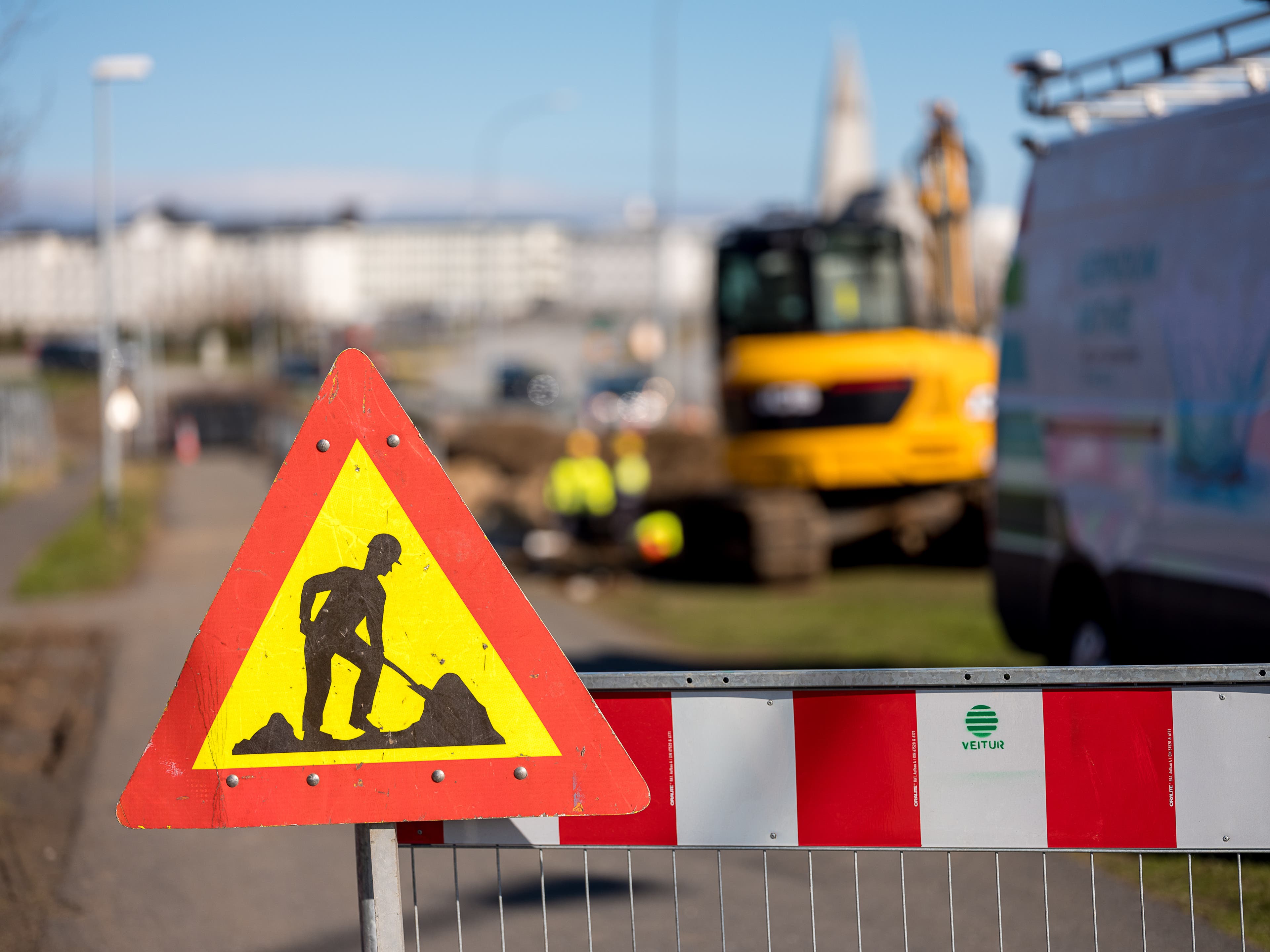Are you about to dig?
Before digging, it is essential to have a clear overview of the project and the worksite. Good preparation contributes to a safe and successful operation.

While you're digging
When digging close to utility pipes there should always be a man in the trench with a shovel, since he has to:
- Manually dig down to the pipe after a warning tape, guards or layer of sand has been found.
- Dig over the top of the pipeline with a spade to show its direction.
- Watch out for other pipes in the trench.
- Fully dig around the pipes and keep them away from excavators.
- Locate spindle valves and branch pipes from the mains.
- Safely preserve the cable guards and warning tapes.
Smooth shovels
When digging around pipes in a trench you may not use dented shovels because they could damage the utility pipes at the slightest touch. Use smooth-edged shovels and be fully informed on district pipes and aware of the earthworks being conducted in the vicinity of the utility pipes. A good mood and satisfactory communication with our workmen will also help.
Hot water piping ducts
The district heating’s older main pipes are made of steel in concrete ducts. When digging, care must be taken to ensure the control cable which lies along the duct is not severed. There is also the danger of causing damage to the seal on the valve and cause leaks. On the the lower edge of the duct there is drain gravel or land drain to prevent water from leaking into the duct. Veitur Utilities should be notified of any damage before the filling goes around the duct.
Digging around hot water pipes
The bucket of the mechanical digger can never touch the plastic coating of the pipes because damage to the coating and/or its joints will cause water or humidity to leak into the insulation and corrode the pipe.
One can only dig around district heating pipes in short segments. The pipes can can succumb to pressure if they are excavated in long segments. When digging takes place at a distance of more than 3 m from pipes of a diameter of 90-110 mm with their coating, there is a high risk that they will succumb under the pressure.
Pipes of a diameter of 140-160mm with their coating can break under pressure if the digging is more than 5m from them. There is a danger of pipes breaking under the pressure if the digging is more than 10m from pipes of a diameter of 200-250 mm with their coating. Contact us about how to dig around pipes with diameters greater than 250mm with their coating.
Digging from cold water pipes
Some types of cold water pipes are pressed together and the pipes therefore have little resistance to pulling. They are held together by joints that are either made of concrete or fixed parts such as in sewerage potholes. If you dig around the joints, major damage can be expected, as you can, for example, see in the picture above. Consult us if you need to dig around the joints of water utility pipes. Our staff will advise you on the envisaged task.
Trench edges and excavations
Carefully organise how you conduct your excavation. Surcharge loads can be hazardous for pipes that lie in an open trench because they can fall in and damage the pipes. Similarly, the edges of a trench can cave in and damage the utility pipes. Please note that the development entity is liable for any damage of this kind. It is paramount to handle surcharge loads and trench edges carefully. Staff working in the trenches can also be placed at risk with the danger of cave-ins and falling loads.
Damage
Please notify us immediately of any damage you either cause or find in the utility pipes. If you are not sure whether the utility pipes have been damaged or not, please call our repair service in any case at tel. 516 6000 and let Veitur Utilities’ staff be the judge of that. The pipes could malfunction immediately after you have left the work site and possibly completed the surface clearance. Surface clearance and earthwork are the most expense elements in most repairs of utility pipes.